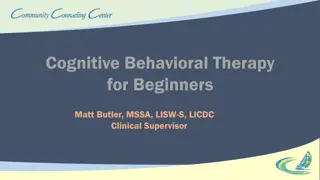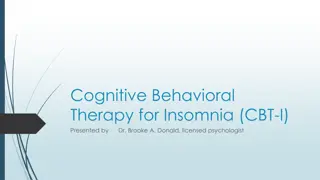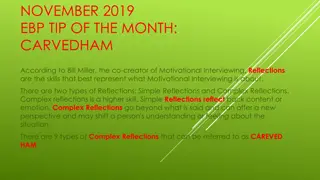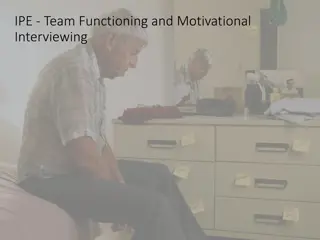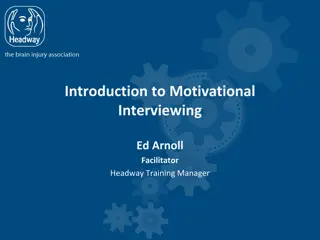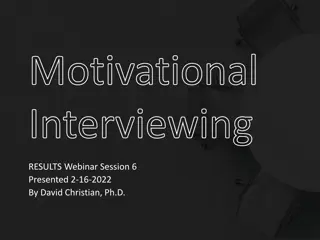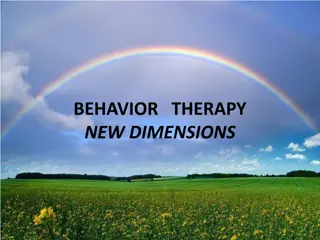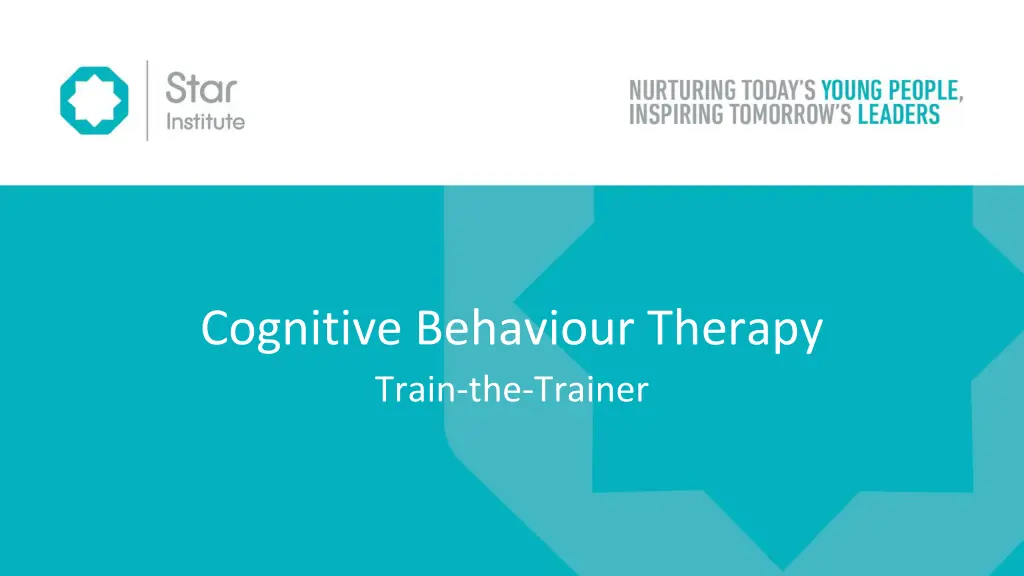
Cognitive Behaviour Therapy Overview
Learn about Cognitive Behaviour Therapy (CBT), an effective type of therapy that helps individuals manage various mental health issues such as anxiety, depression, and OCD by changing negative thought patterns and behaviors. Explore how thoughts and behaviors are interconnected, leading to feelings and reactions, and discover strategies to challenge negative thinking through CBT.
Download Presentation

Please find below an Image/Link to download the presentation.
The content on the website is provided AS IS for your information and personal use only. It may not be sold, licensed, or shared on other websites without obtaining consent from the author. If you encounter any issues during the download, it is possible that the publisher has removed the file from their server.
You are allowed to download the files provided on this website for personal or commercial use, subject to the condition that they are used lawfully. All files are the property of their respective owners.
The content on the website is provided AS IS for your information and personal use only. It may not be sold, licensed, or shared on other websites without obtaining consent from the author.
E N D
Presentation Transcript
Cognitive Behaviour Therapy Train-the-Trainer
Cognitive Behaviour Therapy Cognitive Behaviour Therapy is an effective type of therapy / talking treatment One of most common treatments for a range of common mental health issues, such as anxiety, depression, bipolar, OCD, schizophrenia This type of therapy works to help people manage different situations or problems by changing the way people think and behave.
Thoughts and Behaviours Based on concept that thoughts and beliefs affect feelings which impact on physical sensations and behaviours. Thoughts Behaviours Feelings
Feeling I feel anxious Thoughts I can t do this What is wrong with me? Everyone is looking at me Behaviour Get away from situation Avoid it in future
Thinking and Behaviours These are interconnected and affect each other: Thoughts about a certain situation can often affect how people feel both physically and emotionally, which create physical sensations and reactions Autopilot reaction automatically interpret a situation negatively so people might experience negative emotions as result this will lead people to behave in certain way
Negative Thinking This can start from childhood onwards - negative thoughts become automatic Identify and challenge any negative thought patterns and behaviour which may be causing difficulties: change the way of thinking and feeling about situations, enabling changing behaviour in future Therapist work with client to change unhelpful patterns to improve way they feel Combines cognitive therapy (examining things people think) and behaviour therapy (examining the things that people do)
Elements of CBT Teaches useful and practical strategies which can be used after treatment has finished Focuses on identifying specific problems and setting goals Focuses on current problems Collaborative approach
Reflection Time Consider the information about CBT. What is new learning to you? What and how will you share this with colleagues during training?
Motivational Interviewing Motivational Interviewing can be used alongside CBT Ambivalence about change is central focus in MI It uses a client-centred counselling style that elicits behaviour change by helping clients explore and resolve ambivalence. Supplements CBT to increase and sustain motivation for and commitment to change
Motivational Interviewing Motivational Interviewing, through overcoming ambivalence, increases and sustains motivation and commitment to change Enables a willingness, ability and readiness to change Collaboration between client and therapist where therapist activates clients own motivation for change by respecting sense of self
How Motivational Interviewing works MI involves enhancing client s motivation to change by: Being listened to and understood as an important part of the process of change Recognising that the person who has the problem is the person who has the answer to solve it People only change their behaviour when they feel ready and not when told to do so The answers people find for themselves are the most effective and long- lasting
RULE Four Guiding PrinciplesRESIST Therapists resist telling clients what to do! Tendency to give advice, tell or direct clients about right path which can create barriers Explore client s motivation for change
UNDERSTAND Understand the client s own motivations: Listen to their reasons for change Demonstrate empathy Communicates respect and acceptance
LISTEN Listening rather than telling Listening reflectively and with empathy Reflecting back Seek to understand their values, needs, abilities, motivations and potential barriers to changing behaviours
EMPOWER Empower the individual to understand that they have the ability to change their behaviour To set goals and identify strategies to overcome barriers
Positive Results Goal-orientated and problem-focused Centred on idea that our thoughts and feelings are responsible for how we behave Helps people understand that altering their thought processes can create positive behaviour and outcomes Learn to identify and challenge negative thoughts
Reflection Time Consider the use of Motivational Interviewing What is new learning to you? What and how will you share this with colleagues during training?






